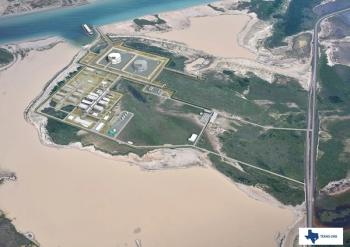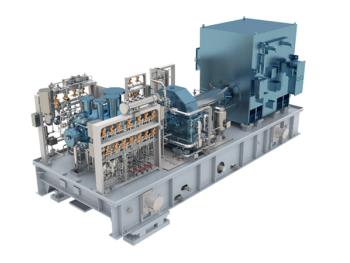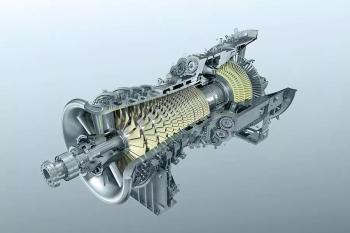
F-class failures and their mitigation
In a presentation at Power Gen International, John P Molloy, principal engineer at M&M Engineering, a Division of Acuren Inspection, said F-class gas turbines have faced multiple long-term failure events have themselves resulting in catastrophic failures: R-0 Compressor blade failures; R-1 Compressor blade failures; latter stage compressor blade/shim dovetail wear; deposition/corrosion-fatigue failures of stators (S1 through S4); and S17 Stator wear.
Molloy said harmonic excitation leads to fatigue cracking at nodal points of maximum alternating stress. Blades are typically harmonically detuned to the higher order harmonics of a given mode. Rotating stall during start/stop can cause very high, localized excitation and resulting stresses. IGV out of calibration can lead to excitation. Air bleed malfunction can also cause surge and blade excitation.
To enhance compressor efficiency, manufacturers are using high strength PH stainless steels instead of the more traditional low hardness martensitic stainless steels. These materials have lower cross-sectional area, optimal for aero. The fatigue strength of high strength precipitation hardened stainless steel is very sensitive to corrosion damage and environment when compared to more typical martensitic steels. Corrosion pitting causes dramatic loss in crack initiation resistance. Pitting is likely in a compressor. Corrosive environment may increase crack propagation rate.
Blades are made from precipitation hardened stainless steel, and can exhibit high fatigue strength, depending on aging heat treatment. Fatigue strength is generally increased by higher tensile strength material. However, when operating environments create stress raisers like pits, dents, gouges, etc., then fatigue strength is not as important as fatigue threshold. The fatigue threshold of a material is not as dependent on tensile strength but is a material property that varies with the load ratios (min. to max. load). A lower fatigue threshold means a smaller defect, such as dents, gouges, or small corrosion pits, could potentially initiate a crack. Most precipitation hardening stainless steels have relatively low fatigue thresholds.
CT compressors have both stator and rotating blades made from PH stainless steels (17-4 PH, 15-5 PH, GTD 450). CT compressor corrosive deposits are concentrated at the evaporation zone. Moist air with deposits or entrained debris (small particles that pass-through filters and volatile species) enter front of compressor. Air is heated and moisture dries out leaving deposits. Load cycles and changes in ambient conditions intermittently wet and dry deposits setting up corrosion cells. Pitting corrosion results. Stator airfoils most susceptible as rotating blades shed deposits by centrifugal loading.
Typical sources of water droplet erosion include inlet filtration bypass. The media must be hydrophobic and water repellent, and fully sealed to the frame to avoid air and water bypass.
In chiller systems, chiller coil leaks lead to inlet droplets of uncontrolled size and distribution. The draft eliminator bypass is capable of collecting condensation but not leaks.
In waterwash system, online water wash will cause erosion even when configured perfectly. Nozzle leaks lead to uncontrolled droplet size.
Mitigation of compressor failures can happen through opportunistic borescope inspections by competent NDE or on-site experts (must inspect correct location, LE, platform radius). Visual inspection of IGV and R0 via bellmouth for corrosion pitting. Minimizing compressor fouling (and pitting) by optimal inlet package, filtration and off-line water washing.
Seal (and maintain seals) on inlet package. Optimize layups such that compressor is clean and dry – (corrosion never sleeps). Minimize LE erosion by optimized fogging/chilling and off-line water wash methods. Recommendation to inspect inlet air system annually to eliminate the risk of FOD. Perform regular IGV calibration. LE replications are only good to gauge erosion, not pitting, so consider upgrading to OEM's enhanced package.
Newsletter
Power your knowledge with the latest in turbine technology, engineering advances, and energy solutions—subscribe to Turbomachinery International today.




